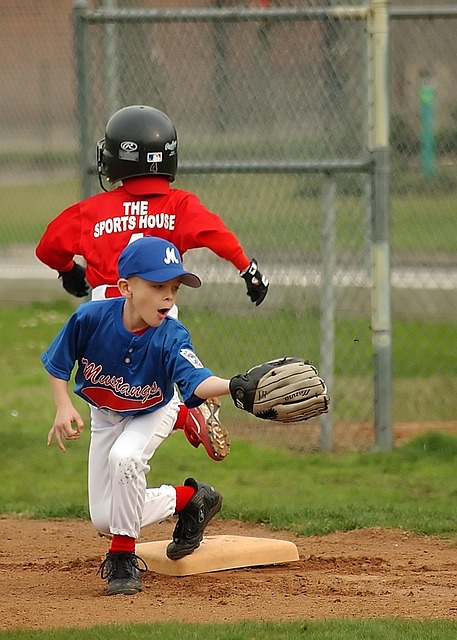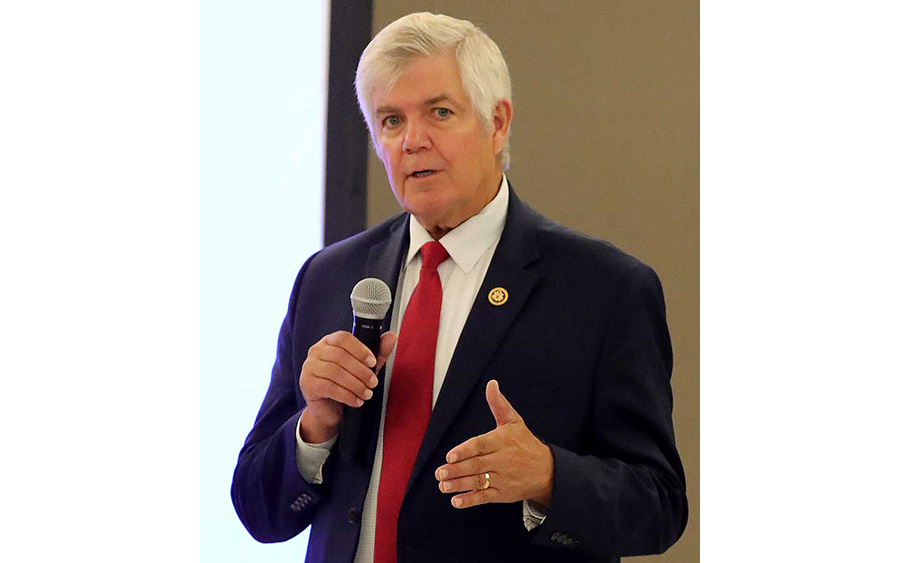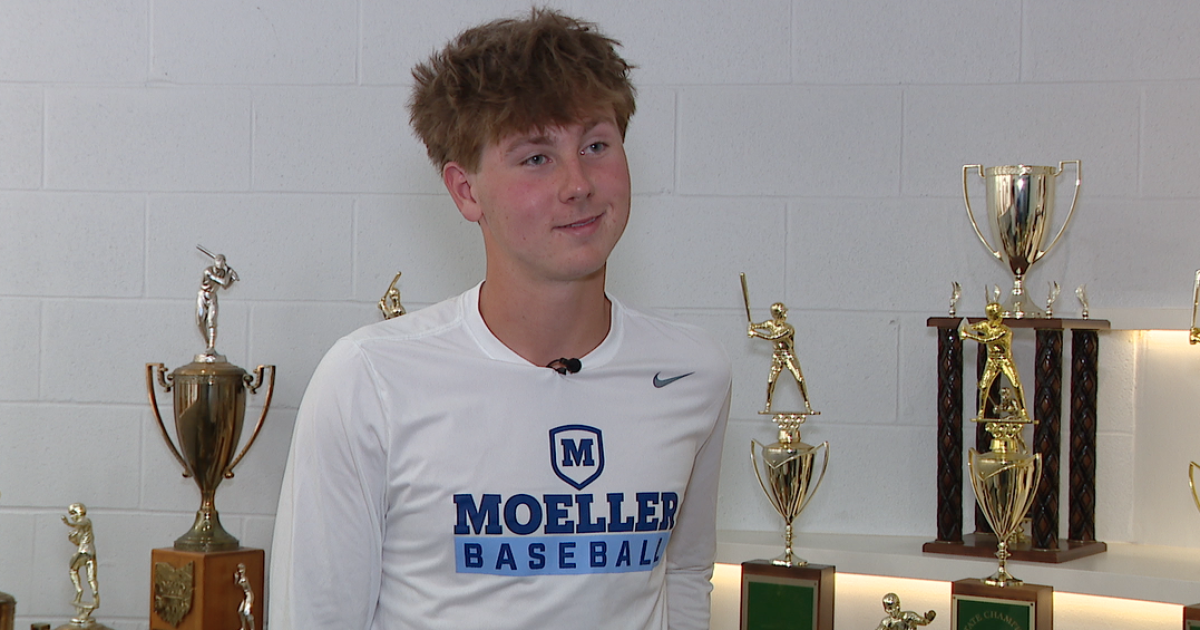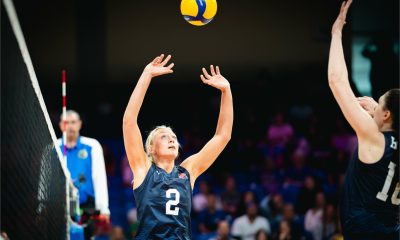Rec Sports
KAUAʻI SPORTS WRAP by MARK JAMES! : Kauai Events : Kauai Now
Sports Calendar Date & Times Fri, May 9, 2025 12:00 am – 11:00 pm Aloha, this is Mark James with your Kaua’i Youth Sports Wrap, brought to you by Wilcox Health. · GOOD LUCK TO THE KAPA’A WARRIORS BASEBALL TEAM AT THE STATE BOYS HIGH SCHOOL TOURNAMENT WHICH RUNS THROUGH TOMORROW IN HONOLULU. · GOOD […]

Sports
Date & Times
| Fri, May 9, 2025 | 12:00 am – 11:00 pm |
Aloha, this is Mark James with your Kaua’i Youth Sports Wrap, brought to you by Wilcox Health.
· GOOD LUCK TO THE KAPA’A WARRIORS BASEBALL TEAM AT THE STATE BOYS HIGH SCHOOL TOURNAMENT WHICH RUNS THROUGH TOMORROW IN HONOLULU.
· GOOD LUCK TO OUR KAUA’I HIGH SCHOOL TENNIS QUALIFIERS WHO ARE COMPETING AT THE STATE CHAMPIONSHIPS THROUGH TOMORROW AT THE LAHAINA CIVIC CENTER.
· GOOD LUCK TO THE KAPA’A WARRIORS WHO WILL REPRESENT OUR ISLAND AT THE BOYS STATE HIGH SCHOOL VOLLEYBALL TOURNAMENT – TODAY AND TOMORROW ON O’AHU.
· SLAM SUMMER BASEBALL CAMP FOR AGES 6 THROUGH 13 IS JUNE 2ND THROUGH THE 6TH FROM 8 A.M. TO 2 P.M. CALL 808-320-77-66 FOR MORE INFORMATION.
· FIRST TEE HAWAI’I’S REGISTERING KIDS 7 THROUGH 17 YEARS OF AGE ON KAUA’I. SATURDAY MORNINGS AT KIAHUNA, STARTING ON MAY 10TH, AND THURSDAY AFTERNOONS AT THE OCEAN COURSE AT HŌKŪALA, STARTING MAY 22ND. TO FIND OUT MORE, GO TO: FIRSTTEEHAWAII.ORG.
· THERE WILL BE A SOCCER CLINIC AT WAILUA HOMESTEADS PARK ON MAY 24th FOR KEIKI AGES 5 THROUGH 12. THE COST IS $30. FOR MORE INFORMATION, CALL NATHAN AT 971-275-0515.
· A.Y.S.O. 941 FALL REGISTRATION IS NOW OPEN FOR KIDS FROM HANAPĒPĒ TO HANALEI. THERE IS AN EARLY BIRD DISCOUNT OF $110 UNTIL JUNE 14TH. AND THEY NEED VOLUNTEERS. GO TO: WWW.AYSO941.ORG/
If you have any youth sports information, like sign-ups, schedules, results or fund raisers that you’d like me to put on the air, email: KauaiSports@PMGhawaii.com
#KauaiSports #KauaiSchoolSports #KauaiBaseball #KauaiBasketball #KauaiBeachVolleyball #KauaiCanoe #KauaiCheer #KauaiFlagFootball #KauaiFootball #KauaiGolf #KauaiPickleball #KauaiSoccer #KauaiSoftball #KauaiSwimming #KauaiTennis #KauaiTrackAndField #KauaiVolleyball #KauaiWrestling #KauaiRun #KauaiFunRun #KauaiCommunityCalendar #KauaiEvents #WhatsOnKauai #KauaiHappenings #PacificMediaGroup #KauaiNow #ad
Rec Sports
Angry Parents Turning Little League Baseball into Battlefields of Poor Sportsmanship
Can You Believe It? The uptick in abuse against umpires and referees in youth sports, including Little League baseball, continues to have a dramatic impact. There is a nationwide umpire shortage. Many umpires retired during the pandemic, but others […]


Can You Believe It?
The uptick in abuse against umpires and referees in youth sports, including Little League baseball, continues to have a dramatic impact. There is a nationwide umpire shortage. Many umpires retired during the pandemic, but others have just had enough.
“It is extremely sad to see because it takes away from the game. It is something children should not have to see. And it sometimes makes the kids emulate their parents’ aggressive action on the playing fields,’’ said Horton Webb, a retired 20-year veteran of youth sports from Waynesburg, Pa. “It is just not safe to be an umpire or referee in any youth sport right now,’’ said Webb, who suffered a broken jaw last summer from an irate parent before quitting.
Since 2017, the number of baseball and softball umpires in the Babe Ruth youth baseball and softball league has been in decline – with 6,229 in 2017 falling to 4,995, according to the National Umpire Association. Between 2018 and 2022, youth sports lost nearly 20,000 umpires at the high school level, according to the National Federation of State High School Associations.
Videos of parents and coaches verbally and physically assaulting umpires have gone viral. In one Little League game in Alabama, a coach is seen grabbing an umpire and throwing him to the ground, with children looking on in disbelief.
Another video shows Texas parents aggressively yelling at an umpire, who ended the game early over the disruption. And a recent survey of youth sport officials by the National Federation of State High School Association, found that 59 percent of umpires and referees don’t feel respected by parents and spectators. During a recent youth baseball game in Lakewood, Colorado, parents disagreed with an umpire’s call and stormed the field. Parents and spectators starting punching each other as 7-year-old players looked on. The association also predicts that 82 percent of current umpires will retire or quit because of unsafe working conditions.
Tim White of Taunton, Mass., said parents threatened to beat him up in a parking lot after a Little League game. “It is simply out of control,’’ he said. The parents disliked his home plate call.
“These acts of violence should not surprise us,’’ said Paula Calabrese, a Pittsburgh-based consultant. “People are angry; it’s life on high volume,’’ she said. “We need to communicate acceptable standards of behavior and be responsible for our actions,’’ said Calabrese.
Already a handful of states, including Florida, Delaware, Hawaii, Georgia, California and Illinois, have established laws to protect umpires. And Little League Baseball and Softball updated the Child Protection Program prior to the 2022 season, which includes an added section on bullying and emotional wellness. The policy was updated to provide guidance to leagues on how to prevent bullying in their program while promoting emotional wellness for players. Little League has zero tolerance for the following behaviors: physical bullying, verbal bullying, emotional bullying, social and cyber bullying, harassment, and hazing.
Any individual that engages in any of the above behaviors or commits violence should be prohibited from participating in Little League. This includes player-to-player, player-to-adult, adult-to-player and adult-to-adult interactions. And if a situation occurs at a Little League event, including practices and games, both parties should be removed from the games until the issues are resolved, according to the Little League Child Protection program..
Kelly Cooke said Little League baseball has been an excellent experience for her 11-year-old son, Malachi. “He is learning leadership skills and self-discipline,” said Cooke, whose son often plays pitcher and catcher with the Squirrel Hill Little League team in Pittsburgh, Pa.
“We are a closely knit group with no tolerance for violence,’’ Cooke said. “Kids will be benched if they do not follow good sportsmanship rules,” she said.
With two million active players annually, Little League baseball is the largest youth sports organization in the world. There are more than 200,000 Little League teams nationwide.
,
Link
Rec Sports
Colorado Rockies giving low-income kids chance to play baseball and softball
DENVER, Colo. (KKTV) – Sports can open so many doors for kids, but not everyone gets the chance to play them. Between the equipment, uniforms and other expenses, it can be hard for low-income families to get their kids involved in baseball and softball. The Colorado Rockies are working to change this by funding baseball […]
DENVER, Colo. (KKTV) – Sports can open so many doors for kids, but not everyone gets the chance to play them.
Between the equipment, uniforms and other expenses, it can be hard for low-income families to get their kids involved in baseball and softball.
The Colorado Rockies are working to change this by funding baseball and softball leagues so kids from these families can experience what it’s like to play these sports.
“We do over 19 camps and clinics all around the state just trying to get youth involved in baseball and softball,” said Jim Kellogg, vice president of community and retail operations for the Colorado Rockies.
Kellogg continues saying, “Baseball can teach so many life lessons.
“Really a lot of the life lessons about being a good teammate, a good person, lifting someone up that’s down, all the messages that we all learn in life we use that and make that towards baseball and our players because of their platform the kids will listen and respond to them.”
Explaining how the Rockies raise money for underprivileged youth, Kellogg tells 11 News, “The two camps that we use as fundraisers for our foundation they’re here at Coors Field.
“The funds that are raised from that go to our foundation which supports our RBI program, which is through Denver public schools, Aurora public schools.
“So we fund a baseball and softball league for kids over the course of the summertime.”
As far as the lesson they try to get across to kids who take part in these camps and leagues, Kellogg tells 11 News, “The kids learn that baseball is a fun sport, it’s a hard sport, life can be hard at times, so we try to send them messages that just incorporate this into your everyday life.
“We all have teammates, so we teach them about taking care of their teammates, being a good teammate and we just try to instill the lessons of life through baseball to these kids.
“And they like to respond to it and it’s fun. They just have a blast out here playing.
“We understand we have a philanthropic responsibility as a professional sports organization to give back to the community as do the other ones and they do a great job of it too.
“Baseball in particular we want to grow young fans and we want them to have the experience.
“We know that if you play baseball or softball as a child, or in elementary school, or in high school, or in college if you can, you’re most likely going to become a baseball fan and you’re going to come out here and love the environment that we have here to watch the best of the best play the game and if you’ve played it yourself as a child, you remember what it feels like to be part of that.
“And you know what we’re proud to be Colorado Rockies, we’re proud to represent the state and we want to serve the community.”
Catcher for the Colorado Rockies Jacob Stallings also tells 11 News how important it is for kids to have the opportunity to play this sport.
“It really can change a kid’s life forever, (it) changed mine forever when I was a kid,” said Stallings.
Stallings also mentions he loves giving back to kids in the community saying, “I think that’s one of the most fun parts of the job for me is just anytime I see a kid in the stands, or you know out and about, giving (them) an autograph or just throwing them a ball or something, I know how much that meant to me when I was a kid when I got to experience that.
“You know we’re lucky, we’re extremely fortunate to be in the position that we’re in to have gotten to play baseball and make enough money to where we can you know help those in need and I think it’s really important.
“You know the team means so much to the community, all the Denver teams do and so anything that us as players, we can do to give back.
“They come out and give us so much support at the ball games, (so) anything we can do to give back to them, we’d love to do it.
“It’s a responsibility to act the right way and play the right way and try to be good examples for those kids.”
Furthermore, Stallings’ advice for kids as he tells 11 News is, “Have fun doing whatever you’re doing, chase your dreams because you know I certainly never thought I’d be a Major League Baseball player so you really never know what could happen if you work hard.
“Just chase what you love and treat others the right way, don’t put limits on yourself. Don’t let other people put limits on you because you really never know what could happen.”
If you would like to register for the Rockies’ baseball/softball camps and clinics, or if you want to make a donation to the team’s foundation click here.
Copyright 2025 KKTV. All rights reserved.
Rec Sports
Oregon’s U.S. Rep. Cliff Bentz insists Republicans ‘not cutting’ Medicaid, SNAP – Ashland News
Bentz said he consulted with former Oregon Gov. John Kitzhaber, a Democrat, weekly for input on the Medicaid portion of the Republican budget By Alex Baumhardt, Oregon Capital Chronicle Oregon’s lone Republican representative in Congress defended the party’s decision to attach new work and citizenship requirements to Medicaid eligibility at a virtual town hall Wednesday night and […]

Bentz said he consulted with former Oregon Gov. John Kitzhaber, a Democrat, weekly for input on the Medicaid portion of the Republican budget
By Alex Baumhardt, Oregon Capital Chronicle
Oregon’s lone Republican representative in Congress defended the party’s decision to attach new work and citizenship requirements to Medicaid eligibility at a virtual town hall Wednesday night and said there is a “travesty” of able-bodied, non-working Americans.
U.S. Rep. Cliff Bentz, who represents Oregon’s 2nd Congressional District covering much of eastern Oregon, answered fewer than a dozen questions submitted online or over the phone during the hourlong event. Bentz said he chose to meet with constituents virtually so that he could reach more of them at once, and because some in the crowd at his in-person town halls earlier in the year were “borderline abusive.”
Bentz started off by explaining what he sees as wins in the Republican budget proposal, which passed the U.S. House of Representatives early Thursday morning. Bentz said he personally worked on much of the 1,100-page bill.
The wins, he said, include income tax cuts and ending taxes on social security benefits; more federal spending on border walls, Immigration and Customs Enforcement, increasing wages and bonuses for Immigration and Customs Enforcement officers, ending tax incentives under the Inflation Reduction Act that “let climate activists set the standards for American energy” and what he said was President Donald Trump’s plan to “completely overhaul” air traffic control systems in the U.S.
But the most common theme among the questions posed by constituents related to the bill was about the fate of the Supplemental Nutrition Assistance Program, or SNAP, which helps low-income people and families afford food, and Medicaid, which funds healthcare for low-income people, kids in low-income families and some people with disabilities.
One in three Oregonians is covered by Medicaid through the Oregon Health Plan, including half of all kids in the state and 70% of kids in Bentz’s district. More than 730,000 Oregonians rely on SNAP.
“Working or not”
The bill passed by U.S. House Republicans would lead to $300 billion in cuts to SNAP, according to the left-leaning Center on Budget and Policy Priorities, and $625 billion of federal funding cuts for Medicaid over 10 years, under the latest estimate by the Congressional Budget Office.
Medicaid cuts would be done in part by requiring those who rely on the state-federal health program and who are between the ages of 19 and 65, to work, participate in community service or attend an educational program at least 80 hours a month. It would also strip Medicaid funding that some states, such as Oregon, use to offer the program to people regardless of immigration status.
Bentz told listeners at the beginning of the event that 4.8 million able-bodied adults are receiving Medicaid benefits and choosing not to work, then later claimed that 21 million Americans are “not actively seeking work, even though they’re capable.” Bentz did not cite any sources for these numbers or respond to an email from the Capital Chronicle asking for the source data.
“It’s a travesty the number of folks that are not working in the United States,” Bentz told his online and call-in audience.
One, a retired doctor from Medford, told Bentz he was concerned about the future of rural hospitals — already operating on thin margins — if Medicaid coverage is harder for Oregonians to get. He told Bentz it will leave hospitals and clinics covering the costs when an uninsured patient walks in.
“You know, working in the hospital, if somebody gets sick, regardless of failure to pay, they’re going to be taken care of,” he said. “Working or not, people still get sick.”
In response, Bentz doubled down on the notion that Republicans are not cutting Medicaid, just imposing more requirements to access it.
“I’m not happy when people start saying ‘You’re going to cut Medicaid,’ because that’s not true,” he said. “What we’re doing is imposing an obligation for those who can work, to work.”
Bentz said he frequently consulted with John Kitzhaber, former Democratic Oregon governor and doctor, on the Medicaid portion of the bill, and said Kitzhaber put together a work group for Bentz to correspond with about Medicaid.
“I reached out to him four months ago and said, ‘Hey, I’m on this subcommittee. Would you be so kind as to assist me in better understanding how we can best approach Medicaid?’ And to his credit, he’s worked with me. I’ve spoken to him almost once a week over the past three months,” Bentz said.
Kitzhaber confirmed this on a call with the Capital Chronicle but said the bill that Republicans passed Thursday is “immoral” and called it “a disaster.”
“We advised him on how the program works, and I warned him over and over again that the impact of this was not going to be good, especially for people in his part of the state,” Kitzhaber said.
He took issue with Republicans dangling work requirements for Medicaid as a new and effective cost-saving measure, because they obfuscate from the reality that most people on Medicaid are already working.
“The fact is, most of those people are working. Some of them have reasons for not working. Some of them are enrolled in community colleges around the state, including east of the mountains. It’s a solution looking for a problem and it’s a way to rationalize huge tax breaks for corporations and people at the top of the income scale,” he said.
Kitzhaber said predicating health care coverage on citizenship is particularly cruel.
“I mean, that is a page out of the Trump playbook. It is the politics of blame. It is the politics of hate,” he said.
Beyond benefits
In response to a constituent question about wildfire prevention, Bentz said the Republican spending bill contains a provision that would allow timber companies a 20-year lease in federal forests to “help manage these forests.”
He said any reporting that the Forest Service won’t have the firefighters they need this summer is wrong.
“There’s been some who have been saying that because of reductions by DOGE and others, that somehow we’re not going to have the people to fight the fire. I just want to assure people that the Forest Service reductions have been extremely modest,” he said.
One caller asked Bentz about prescription drug prices rising, telling him a medicine she takes recently went from $11.98 per month to $40 per month.
Bentz said it’s because of drug companies and pharmacy benefit managers, who will be reined in under a provision of the budget bill.
“We have a parcel fix for that in this great big bill,” Bentz said. “I didn’t read it off but it’s there, and it should have some impact in reducing the cost of drugs.” He said Trump’s negotiating strategy to reduce prescription costs — as the president has promised, by 30% to 80% — is to “make foreign countries pay more so we can pay less.”
Bentz said it is likely that Democrats would attack tax cuts in the bill as disproportionately benefiting wealthy Americans. Indeed, the latest report from the Congressional Budget Office found the package tilted benefits toward the wealthy, projecting it would decrease resources for low-income families over the next decade while increasing resources for top earners.
“The primary thing that you’re going to hear from AOC (Democratic Congresswoman Alexandria Ocasio-Cortez, representing New York’s 14th District), and every one of my fellow congresspeople from Oregon, because they are all Democrats, would be that this is a tax bill for the wealthy,” he said.
He said the top 1% of Americans pay 40% of the income tax, a popular line among Republicans.
“Wealthy people are paying huge amounts of tax,” he said. “What they don’t pay in tax they invest back in the business.”
The top 1% of Americans pay the larger share of income tax because they receive about half of all taxable income in the U.S. each year, according to analysis from the nonprofit, New York-based Peter G. Peterson Foundation, a centrist policy and research group that supports reducing the national debt and federal spending.
Revenue from income taxes is also just one-half of all the tax revenue the federal government collects each year. When payments for all federal taxes — income tax, payroll tax, business taxes, etc. — are spread across all income groups, analysis shows the top 1% pay 25% of federal taxes while the bottom 80% pay 31% of federal taxes, according to the analysis. The bottom 80% are made up of households earning less than $176,000 per year.
The bulk of income earned by the 1% is not labor income, but income from investments and business, according to the analysis.
Alex Baumhardt has been a national radio producer focusing on education for American Public Media since 2017. She has reported from the Arctic to the Antarctic for national and international media, and from Minnesota and Oregon for The Washington Post.
Rec Sports
From sport to corporate risk: How concussion claims are reshaping liability cover | Analysis
As concussion-related litigation gathers pace, a series of landmark UK test cases involving football, rugby union and rugby league could have far-reaching implications for risk professionals working in or around sport. The outcomes of these group litigation claims are expected to clarify the legal responsibilities of national governing bodies when it comes to concussion risk […]

As concussion-related litigation gathers pace, a series of landmark UK test cases involving football, rugby union and rugby league could have far-reaching implications for risk professionals working in or around sport.
The outcomes of these group litigation claims are expected to clarify the legal responsibilities of national governing bodies when it comes to concussion risk management. That, in turn, could influence how insurance markets respond to historical exposures and future underwriting in sectors such as professional and amateur sport, schools, youth programmes and grassroots clubs.

For risk managers operating in these environments, the implications are becoming harder to ignore. Not only could these cases establish new standards for what constitutes adequate risk governance in sport, but insurers are already reassessing their appetite for underwriting long-tail injury risks. The result could be tighter coverage, rising premiums, or even unavailability of cover for certain organisations.
Imogen Mitchell-Webb, associate partner at Horwich Farrelly and head of its sports team, told sister-publication Insurance Times: “There isn’t precedent for this type of thing. There isn’t any concussion case law that we can look at. [These test cases] will be really important at settling whether or not you can sue for historical risk management of concussion risks.”
The claimants – a mix of former professional and amateur athletes – argue that sporting bodies failed to implement appropriate concussion protocols at the time they were playing. Although all three test cases remain in early proceedings, they could pave the way for greater legal clarity and spark wider risk and insurance repercussions.
Risk management, protocols and prevention
Mitchell-Webb noted that there are a number of best practice protocols already in place to mitigate sports linked concussion injuries – including the ‘if in doubt, sit them out’ approach adopted in grassroots sport, which sees coaches removing players from games if there is a suspected concussion – but resource constraints and inconsistency in delivering this method at lower, amateur levels remains a problem.
“The challenge is enforcing that [approach] from top level right through to grassroots,” she said. “[Coaches] are responsible for the kiddies playing on a Sunday, right through to England playing New Zealand in the Six Nations.”
Education is another crucial part of the puzzle.
“If you don’t know what concussion is, you can’t diagnose it,” Mitchell-Webb said, highlighting the burden on volunteers and grassroots referees to know what to look out for in the event of a concussion.
Harry Black, chief executive at Meliora Medical Group – which runs Return2Play, a UK provider of independent, medically led concussion care in school and youth sport – echoed Mitchell-Webb’s view about the need for improved education and risk management.
He said: “There has been significant progress in recent years, especially at the elite level. However, it’s my belief that governing bodies must do more to ensure that robust concussion protocols, education and medical access extend to grassroots and school sport, where most sport participation happens.
“There is still too much inconsistency in how concussions are recognised and managed outside of professional settings.”
He also emphasised the critical role of those on the front lines of youth sport. “Many grassroots coaches and volunteers are still unaware of current best practices,” he said.
“There is an urgent need for standardised training – backed by governing bodies – to help those at the coalface of youth sport [to] identify, remove and refer players with suspected concussions.”
The impact on insurance
With hundreds of claimants across multiple sports under review, the implications for insurers are vast.
“Players involved in this litigation have played over many decades and insurance obviously is renewed every year and it sometimes moves around to different insurers,” Mitchell-Webb said. “So a lot of the market is involved in this just because it historically goes back so far.
“[Manchester United and England footballer] Nobby Stiles’ family are involved in the football claim, for example, and he was one of the 1966 World Cup winners. So that shows you how far back this issue goes.”
And with the possibility that liability for concussion injuries could rest with different levels of the sporting hierarchy – from national bodies like the Rugby Football Union (RFU) or the Football Association (FA), to global organisations such as World Rugby – insurers could be exposed across many years and layers of cover.
“If [these organisations] were all found to be liable, it would be split between all of their insurers,” Mitchell-Webb noted.
She added, therefore, that “lots of insurers” could find themselves with clients that are liable for historic claims as a result of these test cases.
The price of injury
Quantifying the potential losses that could arise from such claims is difficult, however.
Claims linked to concussion injuries could range from relatively minor complaints to severe, life altering conditions. Mitchell-Webb explained that claims could run from £10,000 to £20,000, all the way up to millions of pounds “if somebody is disabled and if their working career was cut short”.
All in all, Mitchell-Webb said the insurance industry could be looking at claims worth “hundreds of millions” – and that this potential financial risk is already shaping the market, with appetite for insuring contact sports shrinking.
“The appetite from the insurance industry to cover these types of sports and these types of risks now is limited,” Mitchell-Webb explained. “Brokers that we speak to have fed back that it is getting harder to place these risks.
“Typically, [these injury] risks tend to be split up into smaller layers nowadays and [brokers] have to engage the whole market to get these risks covered. Back in the day, when maybe less was known, there was more appetite.”
What happens next?
The UK’s High Court is currently considering whether to allow the test case litigation to proceed as group cases, but Mitchell-Webb predicts it will be “a couple of years” before the industry learns anything substantive in terms of hearings.
Despite this, the impact on insurers is already being felt – and that uncertainty is only likely to grow.
“An answer is always better than a grey area,” she said. “And we’ve got a grey area at the moment.”
If the legal system finds in favour of claimants, it could drive significant changes to how insurers underwrite sports risks.
For risk professionals working in sport or related sectors such as education, charities or youth development, these cases serve as a timely reminder to review historical exposure, risk protocols and insurance arrangements.
As legal definitions of acceptable concussion management are tested, insurers are already reassessing their appetite for long-tail liability. Those responsible for managing risk in sport-linked environments should act now to ensure best practice is embedded and cover remains accessible.
Rec Sports
Walkin’ the Sidelines: Enjoy the youth sports journey while it lasts | News, Sports, Jobs
A week ago, I had the privilege of attending my son’s graduation from Marshall University’s Physician Assistant program. As I sat in the bleachers of the arena looking out upon the hundreds of young people who would graduate with varying degrees, I began thinking of how each of their journeys to get to […]

A week ago, I had the privilege of attending my son’s graduation from Marshall University’s Physician Assistant program. As I sat in the bleachers of the arena looking out upon the hundreds of young people who would graduate with varying degrees, I began thinking of how each of their journeys to get to the point of graduation were different.
Each of the roughly twelve-hundred who would graduate that day came from different backgrounds and experiences. However, what they shared is that each of them had experienced a journey to get to that special day in their lives.
Undoubtedly, along the way, many if not all of them at some point attempted to hurry the process to become a graduate. Now, as they sat within an hour of walking across the stage and receiving a piece of paper marking their degree earned, at least some must have wondered where the time had gone.
Surely, their parents and perhaps grandparents had.
Some of the soon-to-be graduates probably thought of their first day on campus, their first day of classes or their first exam. Likely to some or even most, it might have seemed like it was just yesterday that those things had happened. Yet, the reality is that time flies.
There is a lesson in this.
All too often in life, we are so set on our destination that we fail to enjoy the journey. This lesson applies to many aspects in life.
It surely applies to sports. Something that I’ve witnessed in youth and high school sports over the years is the rush that many are in to reach their destination.
For some, it is being in a hurry to get to the next level. It’s the youth league player that can’t wait to play middle school ball. It’s the middle schooler that can’t wait to play varsity. It’s the high school player that’s in a big rush to get to college to pursue their sport at that level. Maybe it’s the player that’s in a hurry, but it might also be their parent(s) that are rushing things along.
What’s the danger in all of it?
Well, you see, while you’re in such a hurry to reach the desired destination, you fail to enjoy the journey of getting there. It would be much like taking a trip to your favorite destination. While driving or riding to the destination, you fail to take in the many sites that are worthy of note along the way … your journey.
My fear is that we are witnessing players and parents who are in such a hurry to get to the next level that they are failing to enjoy the journey. There is much learning that will take place during the journey in getting to the destination.
If you are in too big of a hurry on your journey, you will fail to learn the lessons that are necessary for success once you reach your destination. We would all be wise to remember that time flies. What can also be said of time is that we do not get it back.
Once gone, it’s gone. So, the lesson here is that we all must slow down and enjoy the journey to our destination whatever that may be.
For the athlete, it is enjoying every experience in youth sports understanding their value as well as the fact that the time spent in youth sports is very limited. Your days of playing youth sports will be here and gone before you know it. So, enjoy every day.
For the parent, it is enjoying watching your child play a sport that they enjoy. It’s critical that you let them enjoy it as it is their time. Your time of playing and competing at that level is gone and you’re not getting it back. Remember, once again, time flies.
As a parent of two kids who played multiple sports from the age of three through college, I can attest that while it is occurring, the time seems natural. Sometimes it even seems to drag on.
However, I can tell you now that those days of enjoying them playing went by so fast. Yep, time flies. What I wouldn’t do to be able to see them play a youth or high school sport again. Those days were the best. The experiences and memories are precious.
None of us can stop time. None of us can even get time to slow down. However, what each of us has the power to do is enjoy each day of the journey toward our destination. Or for you parents, your child’s journey.
Players, slow down and enjoy your experience. Make friends, work hard, be humble in victory and learn from defeat. There are so many lessons to learn from sports if we slow down long enough to embrace the journey instead of being in such a big hurry to reach our destination. Don’t look back with regret. Rather, slow down, learn from and enjoy your journey.
You will reach your destination soon enough. Make a vow now that when your destination is reached you will not need to look back upon your journey and say, what if?
Rec Sports
Moeller’s Matt Ponatoski receives invitation to Elite 11 Finals
SYCAMORE TOWNSHIP, Ohio — Ohio’s Mr. Football had a week he won’t soon forget. Moeller 2026 quarterback Matt Ponatoski earned an invitation to the Elite 11 Finals in mid-June. He was also named the Greater Catholic League South division baseball co-player of the year. If that wasn’t enough, the shortstop was also named Ohio’s No. […]

SYCAMORE TOWNSHIP, Ohio — Ohio’s Mr. Football had a week he won’t soon forget.
Moeller 2026 quarterback Matt Ponatoski earned an invitation to the Elite 11 Finals in mid-June. He was also named the Greater Catholic League South division baseball co-player of the year.
If that wasn’t enough, the shortstop was also named Ohio’s No. 1 high school baseball player in his class by Prep Baseball Ohio.
While Greater Cincinnati high school sports fans are able to see Ponatoski excel on the baseball diamondor the football field, his dedication to each sport is a foundation for the recognition.
“They don’t see all the extra work he puts in to be really good at his craft,” Moeller football coach Bert Bathiany said. “He puts in a ton of time.”
After the Moeller baseball team defeated host Vandalia Butler 4-2 on May 17, Ponatoski’s family drove him six hours to arrive in State College, Pa., at 3 a.m. to get prepared for the Elite 11 regional event.
“I actually threw well for windy conditions and lack of sleep,” Ponatoski said Friday afternoon.
On May 19, the four-star quarterback received an invitation to the Elite 11 Finals. The prestigious event is scheduled for June 17-19 at Mira Costa High School in Manhattan Beach, Calif.
“I think he’s going to showcase to everyone why he’s been so good for us,” Bathiany said.
The Elite 11 Finals will feature advanced one-on-one quarterback coaching, intense competition, on-field drills, classroom instruction and holistic development, according to the program’s website.
“To get the call to go compete with the 20 best in the whole USA — it’s really cool,” Ponatoski said. “I want to be in a spot where I can go compete with the best in the country.”
The Elite 11 calls itself the nation’s premier quarterback camp series and competition since it was established in 1999. It will showcase 20 elite quarterbacks from the rising senior class (Class of 2026).
Alumni include NFL quarterbacks such as Aaron Rodgers, Jalen Hurts, Jayden Daniels, Trevor Lawrence, Matthew Stafford, Caleb Williams, Jared Goff, CJ Stroud and several others.
Ponatoski is expected to be the first Greater Cincinnati quarterback to participate next month in the Elite 11 Finals since St. Xavier’s Sean Clifford in 2016.
Other local student-athletes who’ve competed since 2010 include Conner quarterback Drew Barker (2013), along with Highlands quarterback Patrick Towles (2011) and Dixie Heights quarterback Zeke Pike (2011).
Ponatoski, who threw for 4,217 yards and 57 touchdowns in 2024, said he’s looking forward to the seven-on-seven competition and other opportunities in California.
“I think I’m still pretty I would say raw in my quarterback journey,” Ponatoski said. “I work with ‘Coach K’ (Moeller quarterbacks coach George Kontsis) here, and honestly I don’t work with too many other people. Just looking forward to going down there and getting some good instruction from some of the best in the country. Seeing what other guys do and picking up on what they have to do.”
Besides the Elite 11 Finals and completing Moeller’s baseball season, Ponatoski plans to take at least two college campus visits in the next month. He said he will definitely visit Oregon and Alabama — both of which offered scholarships this month.
“Going to make it to Oregon, going to make it to Alabama for sure,” Ponatoski said. “If time allows, get to maybe another school. After that, I don’t think it’s going to be too much longer after I take those visits to make my decision.”
Ponatoski plans to play baseball and football in college. He is still considering several schools, including Alabama, Oregon, Kentucky and Arkansas.
“Maybe four, five, six schools still,” Ponatosk said. “Not trying to make my decision fast. It’d be great to get it over, but also being very detailed in my thoughts. Just to make sure I make the right decision and find the people I want to be around.”
SIGN UP: Subscribe to our high school sports newsletter
-

 High School Sports2 weeks ago
High School Sports2 weeks agoWeb exclusive
-

 Sports2 weeks ago
Sports2 weeks agoPrinceton University
-

 Sports2 weeks ago
Sports2 weeks ago2025 NCAA softball bracket: Women’s College World Series scores, schedule
-

 Motorsports2 weeks ago
Motorsports2 weeks agoBowman Gray is the site of NASCAR’S “Advance Auto Parts Night at the Races” this Saturday
-

 NIL2 weeks ago
NIL2 weeks ago2025 Big Ten Softball Tournament Bracket: Updated matchups, scores, schedule
-

 NIL2 weeks ago
NIL2 weeks agoPatty Gasso confirms Sophia Bordi will not finish season with Oklahoma softball
-

 Motorsports3 weeks ago
Motorsports3 weeks agoMOTORSPORTS: Three local track set to open this week | Sports
-

 Motorsports2 weeks ago
Motorsports2 weeks ago$1.5 Billion Legal Powerhouse Announces Multi-Year NASCAR Deal With Kyle Busch
-

 Sports2 weeks ago
Sports2 weeks agoUSA Volleyball Announces 2025 Women’s VNL Roster
-

 Rec Sports2 weeks ago
Rec Sports2 weeks agoMontgomery County Honors First “Unsung Sports Heroes”































